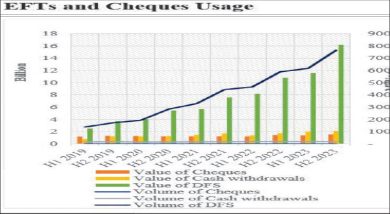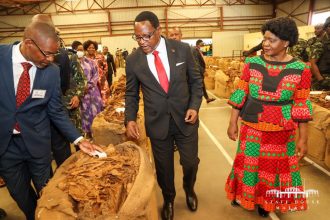Fisp: Time to change strategy?

The Farm Input Subsidy Programme (Fisp)—once touted for ending hunger simply by ignoring expert advice—may now need some expert appraisal and possibly total overhaul.
In the proposed 2013/14 budget, Fisp has been allocated about K60 billion (about $150m)—approximately 10 percent of the total net lending and expenditure which stands at K638.2 billion.
The Fisp has had such a substantial chunk of allocation and government does not show any signs it will reduce the allocations—at least according to available projections.
Based on the 2013/14 financial plan by the Ministry of Finance, out of the total K60 billion allocated to Fisp, K54.59 billion and K5.53 billion have been allocated to fertilizers and seeds respectively. The statement further indicates in 2014/15 and the following year a total of K60.9 billion is projected to be spent on the programme with K54.3 for fertilisers and K6.6 billion for seeds. Thus at least in the next three years the allocation is projected to be constant.
But who benefits?
Apart from transporters and others involved in the procurement of the inputs, the economy specifically the household’s benefit from the programme.
Professor Ephraim Chirwa, in a presentation on Fisp made at the Malawi Institute of Management seminar argues that the programme has positive impacts on incomes however he notes that the effect on poverty reduction is inconclusive.
Says Chirwa: “Several studies point to the Fisp impacts on real wages implicitly or explicitly linking this to improved real incomes. Estimates of subsidy impacts on nominal wages when combined with estimates on maize production also suggest increases in real incomes for poorer non-beneficiaries as well as beneficiaries. The informal rural economy partial equilibrium also estimates substantial real income gains from wage and maize price change impacts, averaging 10 percent and three percent cross all households in the Shire Highlands and Kasungu-Lilongwe Plains respectively.
“In this poor beneficiary households gain most, non-poor beneficiaries and poor non-beneficiaries gain direct and indirect benefits respectively, and non-poor beneficiaries generally lose from the indirect impacts through higher wages and low maize prices. In parts of Shire Highlands, simulated ‘indirect gains’ to real incomes for target households are considerably higher than the direct gains from subsidy receipt 13 percent as compared with seven percent.”
He notes that these indirect gains are higher than simulated for the Kasungu Lilongwe Plain because of the former’s high rates of poverty incidence, high land pressure and larger numbers of poor people relying more on sales of ganyu labour and spending a higher proportion of their income on maize purchases.
The report however argues that if Fisp raises the income of the poor then it should also play a role in poverty reduction, however, he notes the evidence on changes in poverty at the national level is mixed.
Still hungry and poor?
Based on the statistics provided by the National Statistics Office (NSO) the national head count poverty rate in 2005, prior to the implementation of the subsidy programme was estimated at 52 percent. In rural areas approximately 56 percent of the population was living below the poverty line.
Chirwa, however, adds that estimates from welfare monitoring surveys suggest that the poverty rate increased in 2005/06 following the poor 2004/05 crop season and subsequent food shortages, then declined sharply between 2006 and 2007 before stabilising from 2007 to 2009.
However, recent poverty estimates based on the 2010/11 integrated household survey suggest that between 2004/5 and 2010/11 the national poverty rate is much higher than predicted by estimates, and only fell by 2 percent between 2004/5 and 2010/11, suggesting only a marginal change in the wellbeing of the population.
Chirwa notes that one would then expect low maize prices in 2010/11 to stimulate further growth in real incomes and falling poverty. However, poverty incidence in rural areas is estimated at over 56 percent in 2010/11 much higher than expected, with a fall of only 1.5percent from 58.1 percent in 2004/5 to 56.6 percent in 2010/11.
And, in his own words, Minister of Finance presenting the 2013/14 budget in parliament he said that the people of Malawi have no wish to turn into a nation of subsidies. We need to face the fact that almost every service.
He noted that Agriculture is subsidised by almost 75 percent, Education by close to 90 percent, Health by almost 100 percent and until last year, government was subsidizing fuel and electricity
So, if Lipenga is aware that subsidies are not welcome and if Fisp does not have an impact on poverty reduction why stick to it and not change tack.
Minister of Agriculture and Food Security spokesperson Sarah Tione in a telephone interview on Tuesday argued the programme is necessary to ensure food security.
“Fisp is important because it ensures food security at household and national level. Poverty reduction is influenced by a number of factors and may not necessary be a reason to shoot down the programme,” said Tione.





